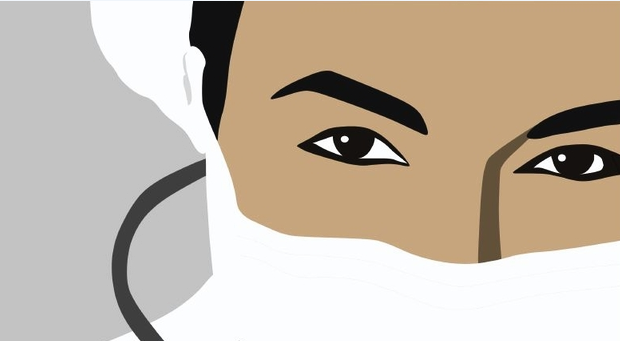
Sometimes, as unfortunate as it may be, physicians are forced to deliver bad news to their patients. Often, however, the way that news is delivered can have a powerful impact on the way it is received. As Ralph Waldo Emerson once put it, “When the eyes say one thing, and the tongue another, a practiced man relies on the language of the first.”
According to Albert Mehrabian, Professor Emeritus of Psychology at UCLA, 55 percent of communication is nonverbal. In other words, more than half of the message you are actually communicating, regardless of the message you intend to communicate, is based upon factors such as posture, eye contact, facial expressions, and hand gestures.
When delivering diagnoses to patients, both verbal and nonverbal communication skills are important. When conveying concrete information—the nature of a patient’s condition, the steps to be taken to treat the condition, etc.—verbal messages have been found to be more effective. While delivering this message, however, physicians should pay close attention to the nonverbal cues they may be unconsciously showing.
This does not mean that physicians should always “put on a happy face,” necessarily; they shouldn’t pretend like bad situations aren’t even happening. Perhaps the most important impact that body language can have, whether upbeat and positive or fretful, is how well it correlates to what the doctor is saying.
A doctor may say to his patient, “There is nothing to worry about; you’re going to be completely fine!” which is, one would assume, good news. If the doctor hesitates while speaking, however, and can’t maintain eye contact for any length of time, the patient may interpret this as worry. The discrepancy between the doctor’s verbal and nonverbal communication can cause the patient to worry about what the doctor may not be telling them.
Perhaps the most important impact that body language can have, whether upbeat and positive or fretful, is how well it correlates to what the doctor is saying.
More than just facial expressions
While many people assume that the best way to judge someone’s mood is based on their facial expressions, a study performed by Princeton University suggests otherwise. In the study, participants were shown photographs of people at emotional “peaks” or extremes. The photos displayed either just the subject’s facial expression, just their body, or both.
The participants were then asked to indicate which emotion the subject of the photo was feeling. Those who viewed only the facial expression only indicated a 50-50 chance of answering correctly. In other words, the participants were just as likely to be correct as if they had been guessing randomly. Meanwhile, those who viewed only the body or the body and the face showed significantly higher success rates.
Tips to keep in mind when interacting with patients
As physicians interact with patients, there are several things they should keep in mind to ensure that the patient is comfortable and receives the news in a way that doesn’t worsen an already potentially upsetting situation.
1) Make eye contact
There is arguably no time where trust between a physician and a patient is more important than when the physician is delivering a diagnosis. At the same time, many people have a strong instinct to look away from someone when delivering bad news. In spite of this, physicians should strive to maintain a reasonable amount of eye contact, or they risk giving a negative impression. Gaze avoidance is often a sign of deception, and it can unintentionally make things worse for patients who are already uncomfortable.
PatientPop recommends using the 50/70 rule when talking with patients to determine what “too much” means in regards to eye contact. When speaking, you should make eye contact about 50 percent of the time. Meanwhile, when listening to the patient and his or her concerns, increase that to about 70 percent of the time to let the patient know that you are paying attention and actually hearing his or her concerns.
2) Be mindful of your posture
A patient receiving a diagnosis for a medical condition they may have is likely already on edge; if you’re not careful, the way you stand can actually worsen the situation. By sitting in a closed position, you can lead the patient to feel isolated, while standing over the patient as they sit can make them feel as though you are talking down to them.
To encourage a relationship of trust that can help you to further the patient’s recovery, you should bring yourself to the patient’s eye level.
To encourage a relationship of trust that can help you to further the patient’s recovery, you should bring yourself to the patient’s eye level. If they are sitting, sit in a chair across from them and make regular eye contact. Angle your body towards them in an open position as you speak. This helps to show that you are approachable and that you are on the patient’s team and that you are doing everything in your power to help.
3) Smile!
Frowning or scowling when you deliver diagnoses to patients either makes you seem detached and uninterested in helping them, or it makes the situation seem even more dour than it may be. Don’t overdo it, and make sure the smile suits the situation. A wide smile as you deliver horrible news can be just as off-putting as a scowl.
Mark Waldman, co-author of Words Can Change Your Brain recommends developing a soft gaze accompanied by a “Mona Lisa smile.” Before entering the room to deliver the diagnosis, picture someone you deeply care about or imagine an event that was remarkably satisfying. This brief exercise can quickly bring your mind into a state where the expression in question will come very naturally.
Comments